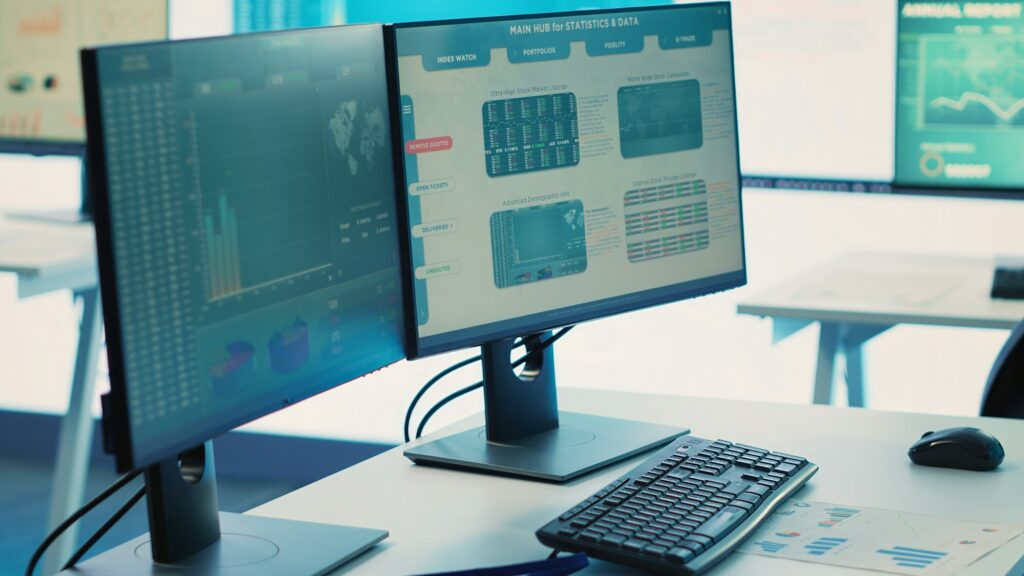
Ever wonder how some people manage to accomplish so much in a single day while others struggle to scratch the surface of their to-do list? The key lies in streamlining your daily workflow for maximum efficiency.
With just a few tweaks to your routine, you can get more done in less time, freeing you up for what truly matters.
Here’s a thought to ponder:
“Efficiency is doing better what is already being done.” – Peter Drucker
In the words of the management guru himself, improving your efficiency isn’t about reinventing the wheel—it’s about refining the processes you already have in place.
So how do you get started? Let’s take a deeper dive into strategies that can transform your day from chaotic to controlled.

Streamlining your daily workflow is about reducing complexities and making each task as smooth and efficient as possible. To start, identify which processes are consuming most of your time.
Look for any repetitive or redundant tasks that could be automated or removed. This initial step will give you a clear picture of where improvements can be made.
Next, break down each workflow into its constituent tasks. Isolate the tasks that add value from those that don’t. This not only helps in paring down unnecessary actions but also allows you to streamline the process effectively.
Simple workflows are easier to manage and monitor, making it less likely that errors will creep in.
Incorporating technology can be a game-changer. Automated workflows minimize data entry and speed up day-to-day tasks significantly.
This allows you to focus on more important work. For instance, you can use project management tools to keep track of your tasks and automate email follow-ups.
These tools often have built-in analytics that can help identify bottlenecks and inefficiencies.
Another important aspect is to keep your workflows adaptable. The best systems allow for flexibility, enabling quick adjustments in response to new challenges or opportunities.
Regularly review and update your workflows to keep them aligned with your goals and the demands of your work environment. In this way, you create a dynamic, efficient workflow that supports growth and adaptability.
By focusing on these aspects, you set the stage for a more productive, cost-effective, and happier work atmosphere. Remember, a streamlined workflow isn’t a one-time setup but rather an ongoing process of refinement and improvement.
Efficiency isn’t just about getting things done; it’s about making sure you’re doing them in the best way possible. By implementing a few strategic changes, you can transform your chaotic day into a well-oiled machine.
Whether you’re a seasoned professional or just beginning to refine your daily routine, improving your workflow can lead to higher productivity and a more balanced life. Here are some practical tips to help you achieve greater efficiency in your daily tasks.

Workflow optimization is all about making your current processes faster, smoother, and more efficient. Think of it as fine-tuning a machine; each small adjustment can lead to significant performance improvements over time.
Here are some tried-and-true strategies to help you streamline your daily workflow:
Optimizing your workflow is an ongoing process. By regularly reviewing and adjusting your strategies, you can continually improve efficiency and productivity.
Whether you’re implementing new technologies or simply redefining your goals, every step you take brings you closer to a seamless, well-oiled workflow.
In the ever-evolving landscape of work, maintaining flexibility and adaptability is crucial. This means being open to new ideas, ready to pivot when necessary, and willing to alter your approach based on feedback and changing circumstances.
By embracing an agile mindset, you can better respond to unexpected challenges and opportunities.
Agile workflows are not just for software development teams. They can be a powerful tool in driving transparency and adaptability across any process. This involves regularly reviewing and refining your workflows to ensure they remain efficient and effective.
For instance, conducting frequent team check-ins can help identify bottlenecks early, allowing you to make necessary adjustments before they become significant issues.
Moreover, incorporating Lean principles can help eliminate inefficiencies and focus on value-driven actions. Lean thinking emphasizes the continuous improvement of processes by identifying and removing waste—a concept that can be applied to your daily workflow to enhance productivity.
Seeking input from various stakeholders is another critical component of staying flexible. Engage your team members, clients, or customers in the conversation.
Their insights can provide valuable perspectives that lead to more efficient workflows. For example, team members might have different ways of tackling a project that could be more effective than the current approach.
Ultimately, the ability to adapt quickly to changing market conditions, customer relationships, and demands can make a significant difference in your workflow’s success.
By paring down and focusing on necessary actions, you can streamline operations and drive efficiency and productivity.

To truly enhance your daily workflow, setting realistic and achievable goals is essential. It’s about balancing ambition with practicality and ensuring that your targets are feasible given the resources and time available. Unrealistic goals can lead to burnout, decreased motivation, and ultimately, inefficiency.
One effective strategy is to break down larger goals into smaller, manageable tasks. This not only makes the goal appear less daunting but also allows you to track progress more easily. By segmenting a goal, you create a clear roadmap that guides you step by step towards completion.
For example, if your goal is to complete a major project at work, break it down into specific tasks such as research, planning, execution, and review. Assign each task a specific timeframe to keep yourself on track. Remember, each small win motivates you further.
Another great method to set effective goals is to use the SMART criteria. This approach ensures that your goals are:
This structured framework aids in formulating goals that are both challenging and attainable, significantly improving your chances of success.
Not all goals are created equal. Start by prioritizing your goals based on their importance and urgency. This helps in focusing your efforts on what’s most critical, ensuring that you allocate your time and resources efficiently.
Use techniques like the Eisenhower Matrix to categorize tasks into four quadrants: urgent and important, important but not urgent, urgent but not important, and neither urgent nor important.
By setting realistic and achievable goals, you pave the way for a streamlined daily workflow that promotes sustained productivity and minimizes stress.

One of the most effective ways to boost your productivity is by automating repetitive tasks. Think of all those mundane activities that eat up precious minutes of your day — tasks like data entry, invoicing, time tracking, and email responses.
With automation tools, you can free up your time and focus on more strategic work.
Investing in workflow automation software, such as Cflow, can fundamentally transform your operations.
These platforms can handle repetitive processes with ease, reducing the risk of human error and speeding up execution times.
By doing so, they not only enhance efficiency but also provide accurate metrics that are crucial for decision-making.
Imagine setting automated workflows to manage your invoices: you ensure they are processed promptly, eliminating bottlenecks, and promoting better financial management.
The same can be applied to tasks like work orders and procurement processes, streamlining operations and boosting team collaboration.
Automation doesn’t just save time; it enhances the overall quality of work, allowing your staff to engage in value-added activities rather than repetitive chores.
Ultimately, automating your routine tasks plays a significant role in workflow optimization. It helps identify and eliminate wasteful steps, standardizes processes, and reduces execution time.
The importance of such efficiency cannot be overstated when aiming for a smooth, effective workflow that can adapt to changing needs and continue to evolve.
Technology can be a game-changer when it comes to optimizing your daily workflow. From automation tools that handle repetitive tasks to project management software that helps you keep track of deadlines and responsibilities, technology streamlines processes and saves valuable time.
For instance, using tools like Trello or Asana can offer better project visibility, while apps like Zapier can automate routine tasks, such as data entry or email responses.
Additionally, tech solutions often come with data analytics features, enabling you to measure performance and make informed decisions.
Cultivating the right habits can significantly boost your daily efficiency. Start by:
Organization is the backbone of an efficient workflow. When you keep your tasks, tools, and information organized, you reduce the time spent searching for things and double-handling work.
Utilize organizational tools like task lists, calendars, and file management systems. Clearly define your workflows and set up orderly processes so that everything is in its place and you know exactly where to find it when needed.
Being organized allows you to maintain focus and stay on top of your daily responsibilities, ultimately leading to increased efficiency.
Staying motivated can be challenging, but it’s essential for maintaining efficient workflows. Try these techniques:
Tracking and measuring the efficiency of your workflow is crucial for continuous improvement. Consider these methods:
Streamlining your daily workflow may seem daunting at first, but with the right strategies, it becomes a manageable and even rewarding task.
By integrating automation tools, staying adaptable, setting SMART goals, and breaking down larger tasks, you create an environment where you can operate at peak efficiency.
Remember, the ultimate goal is to make your daily tasks more manageable, leaving you with more time and less stress.
Don’t hesitate to leverage technology like ClickUp and other all-in-one management systems to assist in organizing and prioritizing your tasks. Automation can take over repetitive tasks, freeing up your time for more high-value activities.
Take it one step at a time, assess what works best for you, and continuously refine your process. As you incorporate these techniques into your daily routine, you will likely find that your productivity and overall job satisfaction improve. Happy optimizing!



